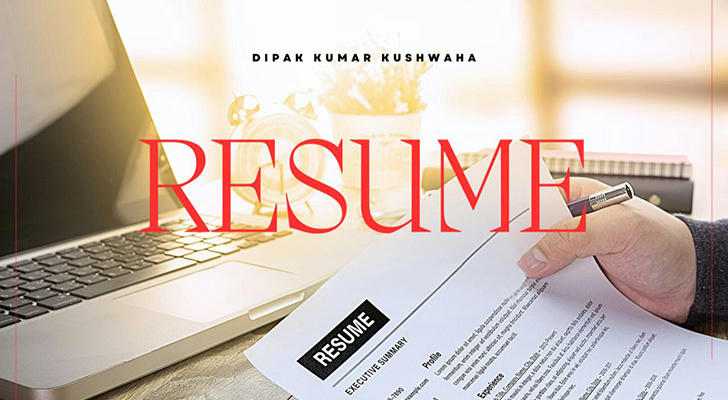How to write a resume so that people will read it hr pays attention to these 3 points
In today’s competitive employment landscape, submitting a resume can often feel like sending a message in a bottle—hoping it reaches the right person and gets the attention it deserves. Despite qualifications and experience, many candidates wonder why their resumes seem to disappear into a void. Human Resources (HR) professionals sift through hundreds of resumes for every open position, so it is critical to understand what truly catches their eye.
Among countless details and sections, three core aspects stand out as the primary focus points for HR professionals when evaluating resumes. These are clarity and relevance, demonstrated accomplishments, and professional presentation. Mastering these three elements significantly increases the chances that a resume will move beyond the initial screening to the interview stage.

1. Clarity and Relevance: The Foundation of a Resume
The first hurdle a resume must clear is clear and relevant content that aligns with the job opportunity. HR professionals spend mere seconds scanning each resume during the initial phase—sometimes as little as six to seven seconds. During this rapid assessment, clarity becomes a decisive factor.
Why Clarity Matters
A resume that is cluttered, confusing, or overly verbose risks immediate dismissal. The ability to convey key information quickly and logically demonstrates professionalism and respect for the reader’s time. A clear structure includes well-defined sections such as Contact Information, Professional Summary, Work Experience, Education, and Skills. Each section should be easy to locate and scan.
Relevance: Tailoring the Resume

Relevance means tailoring the resume content to the specific role or industry. Generic resumes rarely impress; instead, aligning experience, skills, and keywords with the job description speaks directly to the employer’s needs. This alignment shows that the applicant has invested time to understand the position and how their background fits.
Real-World Example: The Marketing Specialist

A marketing professional applied to several companies with a generic resume listing all previous job roles and skills without adaptation. Despite a strong background, responses were minimal. After consulting industry peers, the resume was revised to emphasize digital campaign successes and data analytics experience specifically requested in job postings. The revised resume generated significantly more interview callbacks, illustrating how relevance improves visibility.
2. Demonstrated Accomplishments: Beyond Duties and Responsibilities
Listing duties and job responsibilities without highlighting achievements limits the impact of a resume. Employers want evidence of real contributions and measurable results, not just a description of tasks.
Quantifiable Achievements Speak Louder
Numbers, percentages, and specific outcomes provide tangible proof of effectiveness. For instance, stating “increased sales” is vague, but “increased sales by 25% within six months” communicates a clear achievement. Quantifiable accomplishments help HR visualize the candidate’s potential impact.
Using Action-Oriented Language

Strong resumes employ active verbs such as “managed,” “developed,” “led,” and “optimized” to describe accomplishments. This language conveys initiative and proactivity rather than passivity.
Case Study: The IT Project Manager
An IT project manager initially submitted resumes that detailed responsibilities like “oversaw project timelines” and “coordinated with teams.” After feedback, the candidate revised the resume to include results, such as “delivered project 2 weeks ahead of schedule, reducing costs by 15%,” and “implemented new agile methodology improving team productivity by 20%.” This shift from duties to impact helped secure multiple interviews at top firms.
3. Professional Presentation: The Resume’s Visual and Stylistic Appeal
Presentation plays a critical role in shaping first impressions. While content is king, the resume’s format, readability, and consistency influence whether it receives further consideration.
Simplicity and Consistency
Simple, clean designs with consistent formatting reduce distractions. Avoid excessive fonts, colors, or graphics which can clutter the resume and confuse applicant tracking systems (ATS) — software many companies use to screen resumes. Bullet points, consistent date formats, and uniform spacing contribute to a professional look.
Error-Free Content
Spelling mistakes, grammatical errors, or formatting glitches suggest carelessness. HR professionals often associate such errors with a lack of attention to detail, which may reflect negatively on work habits.
Optimizing for ATS
Many organizations use ATS to filter resumes before human review. Including keywords from the job description, using standard section headings, and avoiding images or unusual fonts help ensure the resume passes these automated screenings.
Example: The Financial Analyst
A financial analyst submitted a resume using multiple font styles and embedded charts. Though visually attractive, the resume was rejected by ATS. Simplifying the layout and removing images improved ATS compatibility, leading to successful screenings and interviews.
Additional Insights: Beyond the Top Three
While clarity, achievements, and presentation are paramount, other elements can also enhance a resume’s effectiveness.
Professional Summary or Objective
A brief professional summary that highlights core competencies and career goals provides context for the rest of the resume. It sets the tone and helps HR quickly grasp the applicant’s suitability.
Skills Section
Clearly listing relevant skills, especially technical or industry-specific competencies, helps HR quickly identify critical qualifications.
Education and Certifications
Including relevant education credentials and certifications adds credibility, particularly in fields with required qualifications.
Common Pitfalls to Avoid
Understanding what HR values also involves recognizing frequent mistakes.
- Overloading with jargon: Excessive use of technical language can alienate non-expert HR screeners.
- Including irrelevant information: Personal details or unrelated experiences may clutter the resume.
- Lengthy resumes: Keeping resumes concise—usually one to two pages—is optimal.
- Passive language: Avoid phrasing that downplays achievements or lacks energy.
Final Thoughts

The resume serves as the gateway to professional opportunities. Despite qualifications, the ability to communicate value clearly and compellingly through a resume is essential. HR professionals prioritize resumes that demonstrate clear relevance, highlight concrete accomplishments, and present information in a polished and accessible manner.
Candidates aiming to enhance their resume’s effectiveness should focus on these three pillars. Real-world examples confirm that adapting resumes with these priorities in mind results in better outcomes. In a process often described as highly competitive, strategic presentation and content selection can make a decisive difference.
If attention is given to clarity, accomplishments, and professional presentation, a resume not only becomes more noticeable but also positions the candidate as a thoughtful and capable professional ready for the next step.
